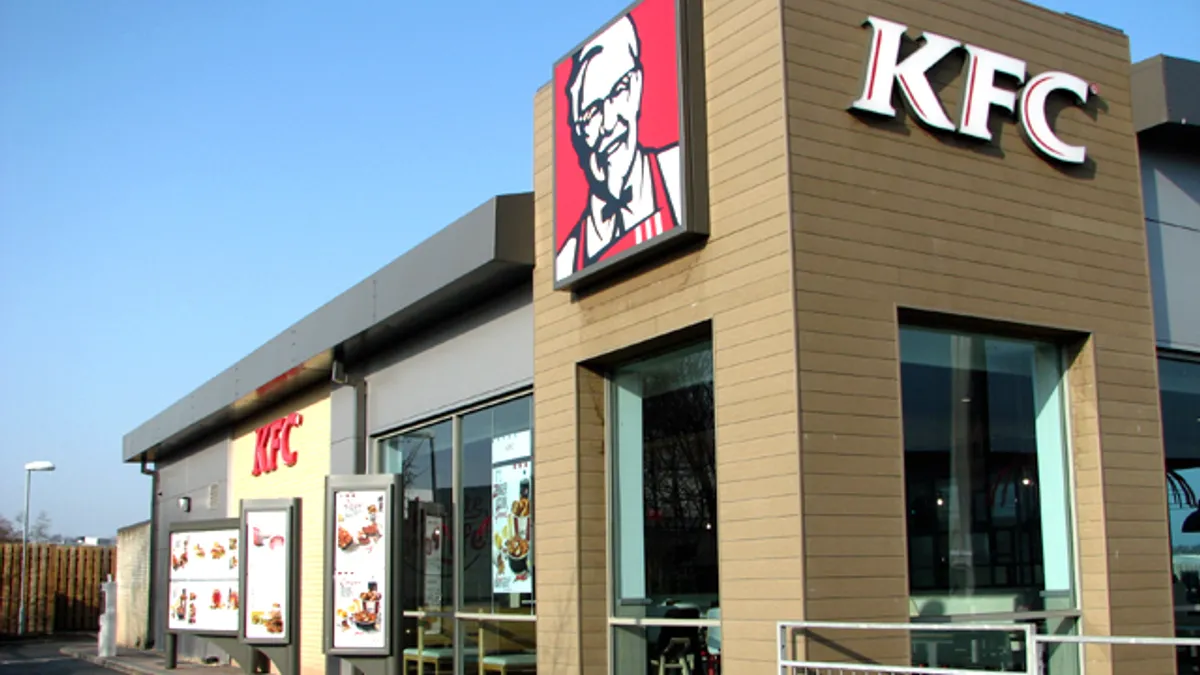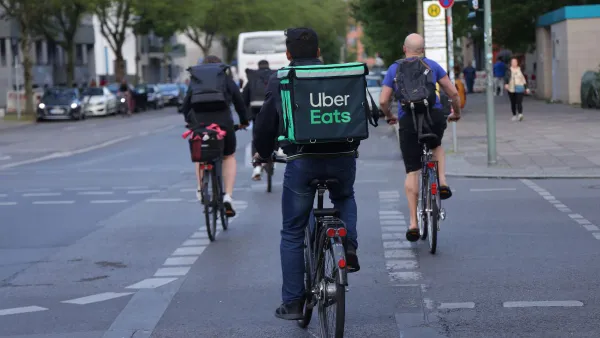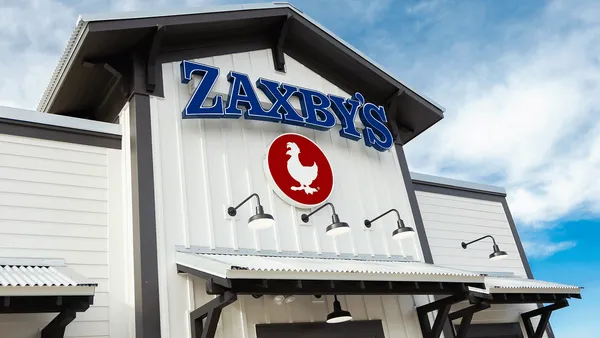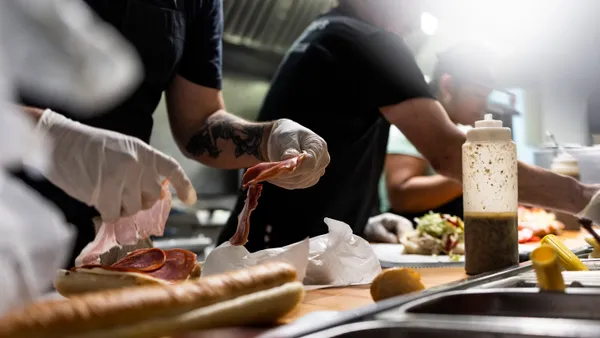Dive Brief:
- KFC opened a new flagship restaurant in its hometown of Louisville, Kentucky, this week. The 2,658-square-foot, company-owned restaurant's design elements include self-serve digital kiosks, an area dedicated to mobile order and delivery pickup, and digital menu boards both in-store and at the drive-thru.
- Chief development officer Brian Cahoe told Louisville Business First that the restaurant is an upscale version of KFC’s American Showman design, first introduced in Louisville in 2014, and will help inform the company of how diners interact with its new technologies.
- Cahoe did not disclose how much construction of the flagship cost, but said it was more expensive than a standard American Showman model.
Dive Insight:
By the end of this year, more than 50% of domestic KFCs will be outfitted in the American Showman design. This flagship restaurant is a bit different, however, featuring all of the bells and whistles so franchisees can learn about them when they’re in town to visit corporate. Cahoe said the company-owned restaurant will serve as a kind of learning lab, telling Louisville Business First, “We anticipate that as we learn … all the different ways you can access the restaurant … to learn from those and understand how the consumer is reacting to more technology.”
That includes its self-serve ordering kiosks, which are increasingly making their way throughout the quick-service segment, including at sister chain Taco Bell and at segment leader McDonald’s. McDonald’s has experienced sales lifts from the customer-facing technology. CEO Steve Easterbrook said customers tend to dwell longer at the screen, which typically provides a check boost.
Gavin Felder, KFC Global’s chief financial officer, has said that kiosks eliminate a sense of order anxiety, and that kiosks fit the company’s overall goal of being “RED,” or relevant, easy and distinctive. As such, KFC plans to have 5,000 restaurants around the world equipped with kiosks by 2020.
The dedicated delivery/mobile order pickup space should also ensure operational efficiencies as the chain increasingly rolls out delivery. During parent company Yum Brands’ Q1 call, CEO Greg Creed said KFC will launch delivery nationwide later this year.
Finally, the digital menu boards are also a clear move toward next-gen KFC, as more consumers — particularly younger, digital native ones — have come to expect digital versus static signage. Digital signage has also been proven to generate a pretty quick return on investment. A report from Eclipse Digital Media shows that average sales can increase anywhere from 3% to 5% from digital menu boards because of the technology’s ability to influence unplanned purchases.
KFC first introduced its American Showman design in 2014 — also in Louisville — and is riding five straight years of same-store sales growth. It’s hard to argue there’s no correlation between the two, and with a bevy of technological enhancements to complement the updated look, there’s little reason to believe that growth won’t continue. Restaurant renovations can increase sales between 7% and 20%, according to BFS Capital. Riding this momentum, KFC is aiming to generate net new unit growth this year for the first time since 2004.














